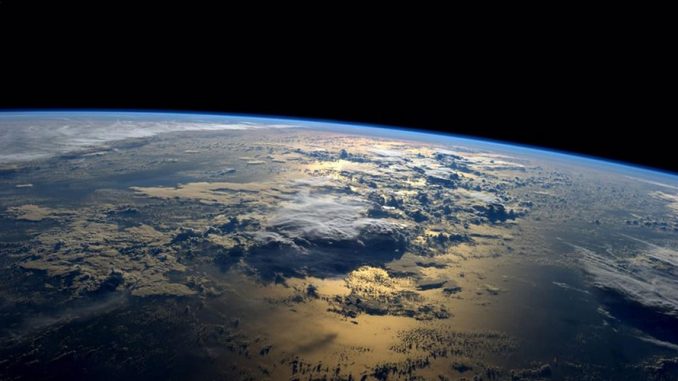
Scientists have discovered a new continent hidden in plain view in the Pacific Ocean right next to New Zealand.
Zealandia, as it is formally called, is a continent with a 5 million square kilometre landmass that lays largely submerged in the south-west Pacific.
The 11 geologists from New Zealand and Australia who discovered Zealandia say that it should be confirmed as earth’s eighth continent, after Africa, Asia, Antarctica, Australia, Europe, North America, and South America.

BYPASS THE CENSORS
Sign up to get unfiltered news delivered straight to your inbox.
You can unsubscribe any time. By subscribing you agree to our Terms of Use
Latest Video
Inquisitr reports:
Since we were kids we were taught that the Earth has seven continents — Africa, Asia, Antarctica, Australia, Europe, North America, and South America. Six, if you combine Europe and Asia together and call it Eurasia.
But now, it appears that there’s an underwater continent that’s been hiding under our noses all this time.
By gathering satellite data and rock samples, among many other things, 11 researchers now have conclusive evidence that they found a new continent on Earth aptly named ‘Zealandia.’
Earth has a new continent called ‘Zealandia,’ and it’s been hiding in plain sight for ages https://t.co/JW8q6Wl9QA pic.twitter.com/eDzlCWrRMe
— Business Insider (@businessinsider) February 15, 2017
“This is not a sudden discovery, but a gradual realization; as recently as 10 years ago we would not have had the accumulated data or confidence in interpretation to write this paper,” researchers wrote in GSA Today, a journal of the Geological Society of America.
The study concludes that New Zealand and New Caledonia aren’t just island chains, but are part of a 1.89 million-square-mile region separate from Australia. The researchers are calling Zealandia as “the youngest, thinnest, and most submerged continent on the planet.
GSA Today #Science Online Ahead of Print
‘Zealandia: Earth’s Hidden Continent’ https://t.co/gB85focR0w https://t.co/fTa7B0Xo1P pic.twitter.com/sIZsFdUoFB— geosociety (@geosociety) February 14, 2017
The theory that there’s a new continent on Earth called Zealandia isn’t new. In 2007, Hamish Campbell, one of the authors behind the GNS report, argued in his book “In Search of Ancient New Zealand” that Zealandia was completely submerged before shifts of continental plates caused New Zealand and New Caledonia to emerge from underwater, as reported by Travel and Leisure.
Bruce Luyendyk, a geophysicist at the University of California at Santa Barbara, coined the term “Zealandia” in 1995. Though he wasn’t part of the research team that worked on the GNC study that proves there’s another continent on Earth besides the ones we already know, he vouched for the abilities of the scientists who diligently worked on the study.
“These people here are A-list earth scientists,” Luyendyk told Business Insider. “I think they’ve
put together a solid collection of evidence that’s really thorough. I don’t see that there’s going to be a lot of pushback, except maybe around the edges.”
Lyendyk said that he never intended Zealandia to be a new continent, saying that he only coined the term to describe New Zealand, New Caledonia, and some pieces and slices of crust that broke off from Gondwana, a 200 million-year-old supercontinent.
“The reason I came up with this term is out of convenience,” he said. “They’re pieces of the same thing when you look at Gondwana. So I thought, ‘Why do you keep naming this collection of pieces as different things?’”
Little did Lyendyk know that researchers would advance his ‘Zealandia’ idea. Like any worthwhile scientific discovery, the discovery took not only years but decades of painstaking and exhaustive research and data gathering before it was fully realized.
According to Business Insider, the researchers used four criteria to come up with their conclusions.
- Land that pokes up relatively high from the ocean floor.
- A diversity of three types of rocks: igneous (spewed by volcanoes), metamorphic (altered by heat/pressure), and sedimentary (made by erosion).
- A thicker, less dense section of crust compared with surrounding ocean floor.
- “Well-defined limits around a large enough area to be considered a continent rather than a microcontinent or continental fragment.”
Geologists determined that New Zealand and New Caledonia satisfy criteria one, two, and three. Both regions poke high enough from the ocean floor that it’s easy to imagine them being part of a larger continent on the earth’s crust. Both are also geologically diverse and are made of thicker, less dense crust.
Welcome to Zealandia. Inside this fence is an ancient world where devastated New Zealand species can thrive again https://t.co/iw6Bo2Wu80 pic.twitter.com/p296ixECCQ
— New Scientist (@newscientist) February 3, 2017
Now that we can confirm for a fact that there’s a brand new continent called Zealandia, researchers are presented with new opportunities for predicting and examining how the Earth’s continental crust moves.


